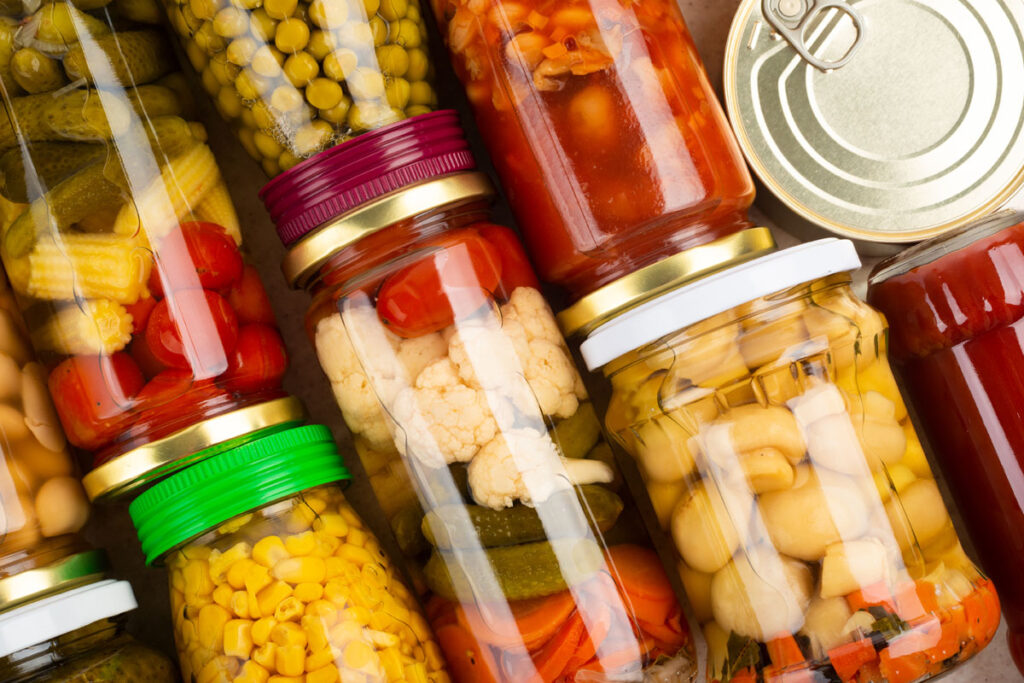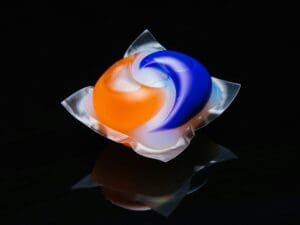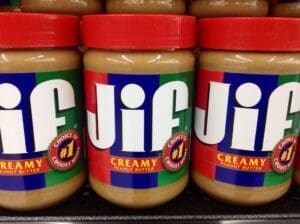During the pandemic, Americans started stockpiling their pantries due to food and supply shortages. Keeping your pantry stocked is always a good idea, as natural disasters and other events can occur practically anywhere, at any time. Here are the foods you should stock in your pantry for emergencies.

Disasters and Accidents Can Occur at Any Time
Natural disasters such as hurricanes, tornadoes, floods, earthquakes, and wildfires can happen at any time. Even vehicle accidents can take out power and water.
Any of the aforementioned events can leave you without clean drinking water and electricity for days, even weeks. All your refrigerated and frozen food could spoil, with no way to cook it before it does. That’s why it’s important to maintain an adequate supply of nonperishable food as a backup plan.
How Much Food Should You Stock for Emergencies?
How much nonperishable food you should stock in your pantry for emergencies will vary according to your situation and comfort level.
At a bare minimum, you should maintain at least a 3-day supply of fresh food and drinking water for each person living in your household. This also applies to pets.
However, it is recommended to keep a 14-day supply of food and water. This is especially true if you are a significant distance away from stores. During disasters, roads could be blocked, and/or gasoline could be in short supply.
Make sure to regularly check dates and rotate older items out of your supply by using them before they expire. Replacing expiring items with newer ones.
10 Foods to Stock in Your Pantry for Emergencies Year-Round
Here are our recommendations for the most important foods to stock in your pantry for emergencies. These foods will give you the essential nutrients to survive until the situation improves.
1. Water
The maximum time the body can survive without water is estimated at a few days, according to Healthline. Therefore, this is the most crucial item you need to keep in stock. Even if you had no food, but had only water, you may be able to survive up to 2 to 3 months.
In terms of how much water you should store, the minimum amount is one gallon per day per person (and per pet), according to FEMA. It’s advisable to purchase large 1-gallon water jugs rather than single-use plastic water bottles. Not only are jugs less expensive, but they are easier to stack and store.
2. Jerky and Dehydrated Meats
Protein is essential for survival. Jerky is long-lasting and requires no refrigeration. Store in a sealed container to maintain freshness longer.
Although most commonly made from beef, jerky is available in a variety of meats such as venison (deer), turkey, lamb, poultry, and fish. You can also find more exotic meats used for jerky such as elk, buffalo, ostrich, kangaroo, alligator, and more. And recently plant-based options have become more prevalent.
3. Canned Vegetables, Fruits, and Legumes
In addition to protein, you need vegetables, fruits, and legumes (beans, lentils, peas) to provide your body with other essential vitamins and minerals.
Make sure to have at least a pair of manual can openers available in case one functions poorly or breaks.
Read More: How Seaweed Could Save the World
4. Canned Soups, Stews, and Chili
Canned soups can also provide many of the necessary essential proteins, minerals, and vitamins in the form of meats, vegetables, and/or legumes.
Stews provide a heartier mix of protein (meat) and vegetables and/or legumes. Chili and beans provide a good serving of protein and legumes. Both of these products can be high in sodium, so look to see if low-sodium versions are available if that is a concern for you.
Read More: Easy Tips to Avoid Catching Seasonal Bugs
5. Canned Meats
While tuna is the first canned meat likely to come to mind, a wide variety of canned meats exist — including roast beef, chicken, corned beef, salmon, crab, and more.
Sardines are also a good source of protein, and the cans usually come with a built-in opener. Be aware that sardines are high in salt.
6. Crackers
Carbohydrates get a bad rap, but they are essential for a balanced and nutritious diet, particularly in a survival situation. Carbs provide quick energy.
Crackers are ideal because they last longer than bread. Most crackers stay fresh for several months. Crackers with canned meat are a good meal combination.
7. Freeze-Dried Meals
Complete freeze-dried meals are also available. Many have extended shelf lives that can last up to 10 years.
Freeze-dried meal kits are available for all diets and tastes including carnivore, vegetarian, and vegan.
Read More: Kitchen Gadgets That’ll Make Cooking So Much Easier
8. Dehydrated Fruit
Dried fruits are easily acquired from a grocery store. They have a long shelf life when kept in a sealed container.
You can even make your own dried fruits at home using a dehydrator.
9. Protein and Granola Bars
Protein and granola bars are not only a good snack, but some can serve as a meal substitute. They are an excellent source of quick energy. Some granola bars also include additional ingredients, such as milk and nuts, that elevate them to the nutrition level of eating a breakfast cereal.
Some protein bars that are designed to be meal substitutes will contain an abundant supply of protein, vitamins, and minerals.
10. Shelf-Stable Beverages
Shelf-stable beverages are those defined as not requiring refrigeration until they have been opened.
These beverages include electrolyte drinks such as Gatorade or Powerade, as well as canned or boxed milk, soy milk, almond milk, rice milk, and bottled or boxed juices. Sodas and energy drinks are also in this category, but experts warn these sugary drinks might dehydrate you further.









